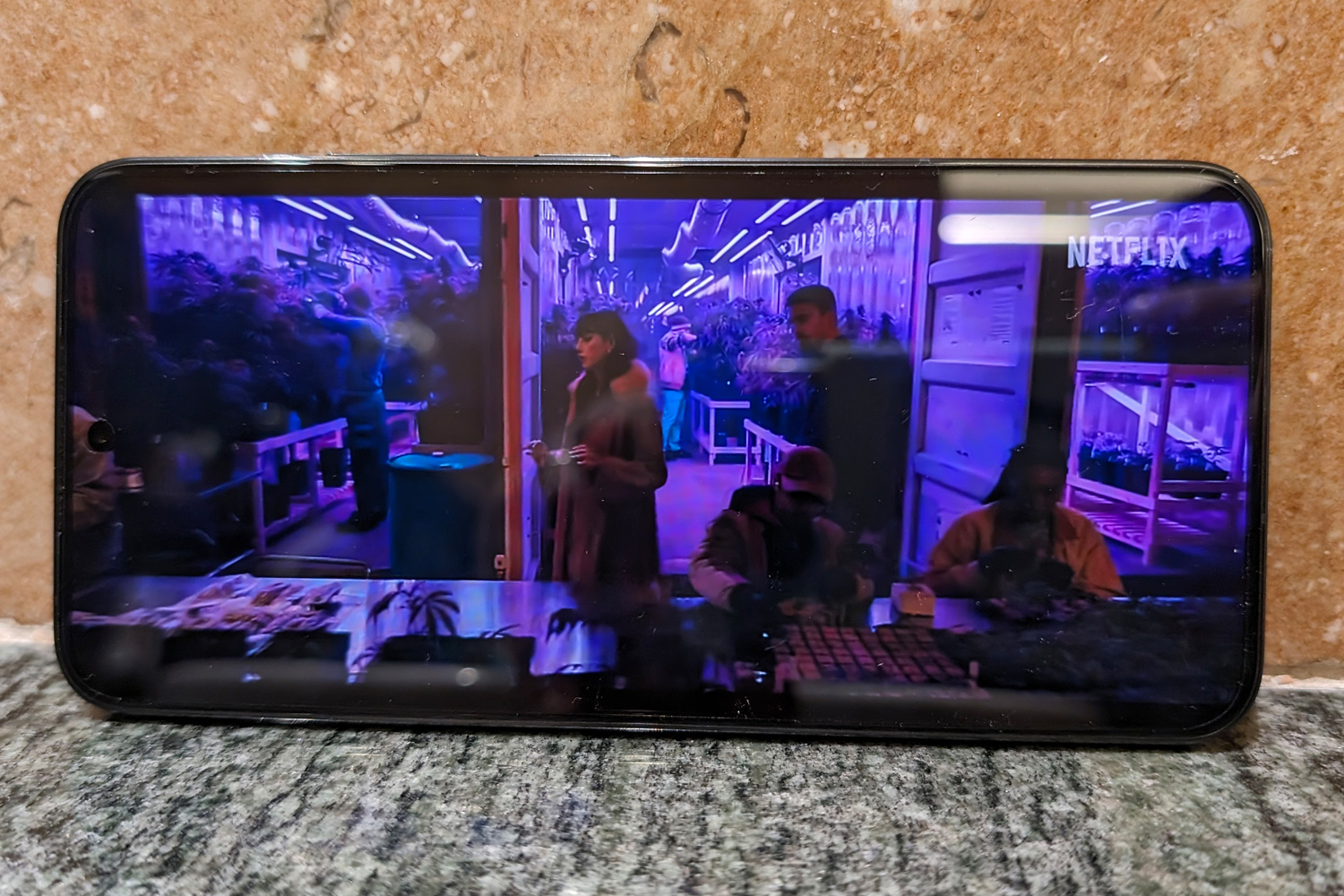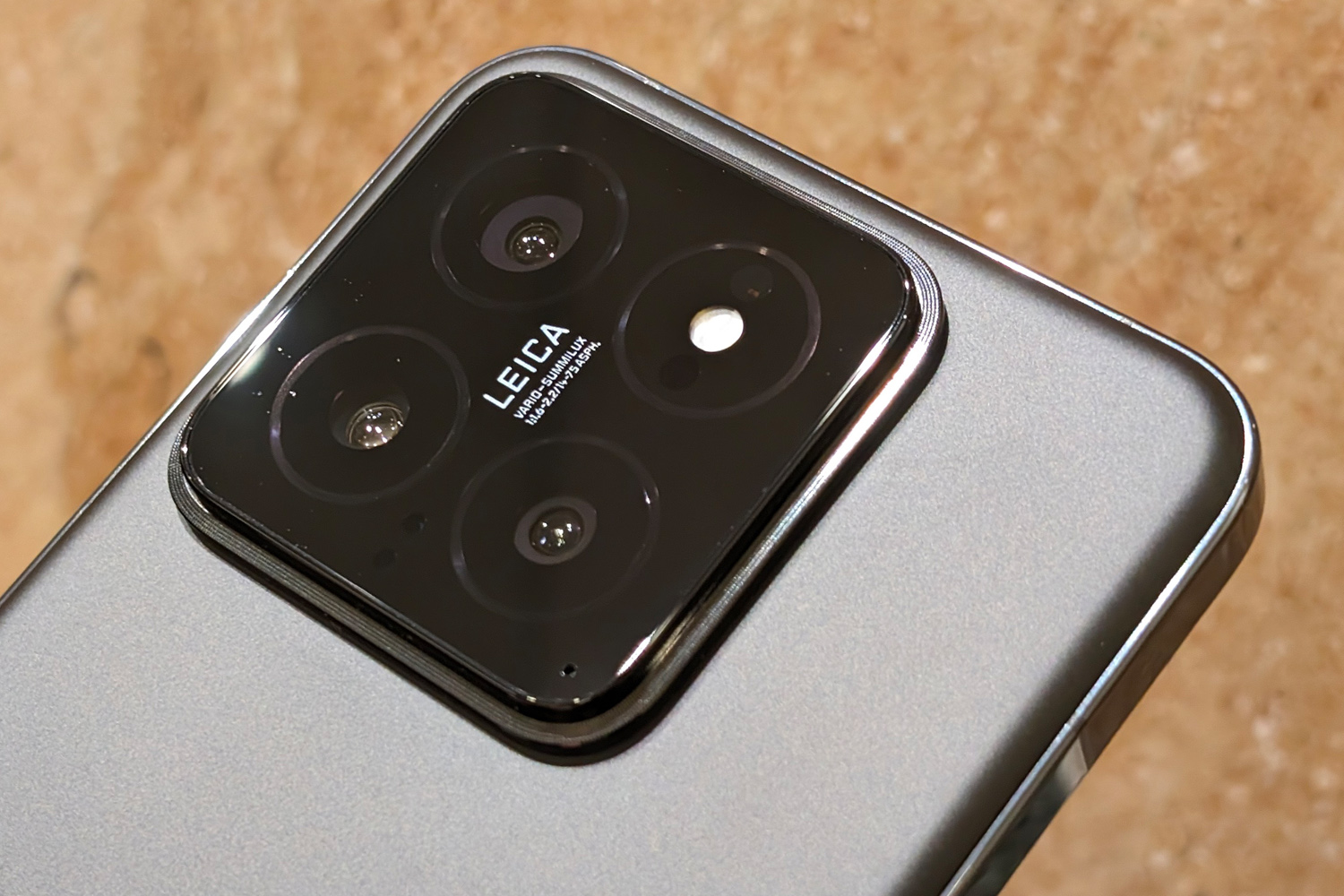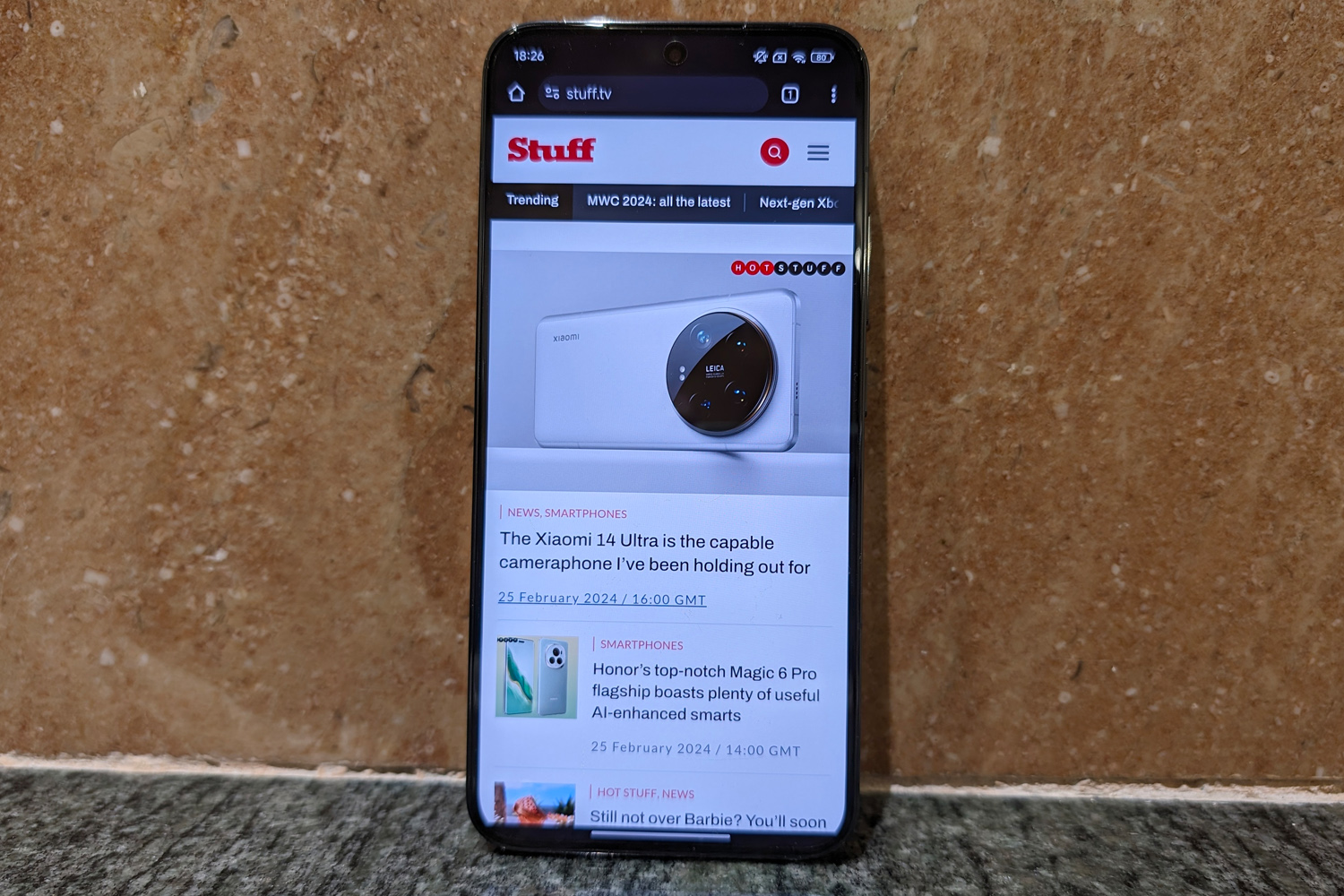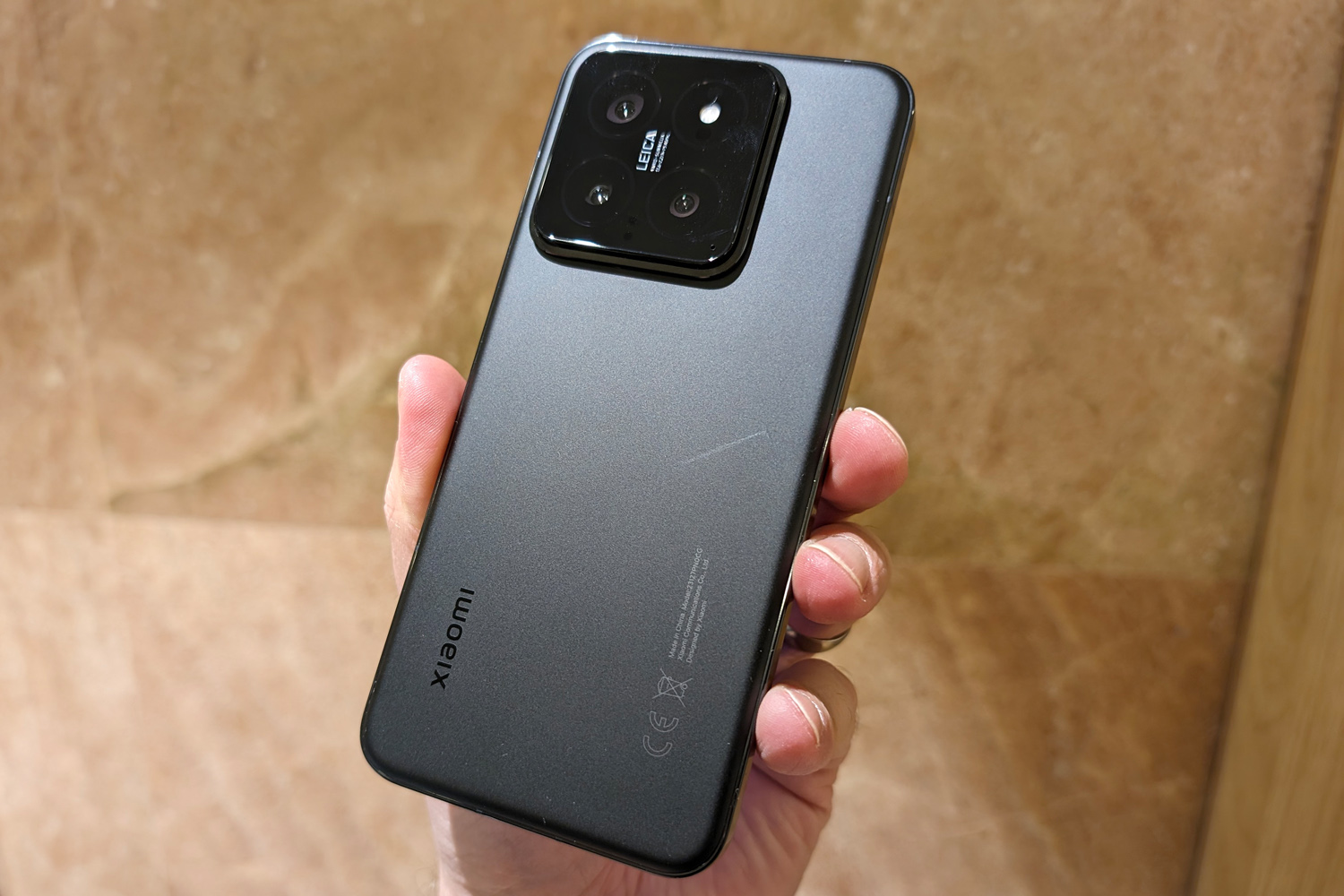Introduction
You really kept us waiting for a first taste of your latest smartphone generation, didn’t you Xiaomi? It debuted in China all the way back in October, yet it’s taken until now for the Xiaomi 14 to reach the rest of the world. A bunch of rivals have rocked up in the interim, bringing AI advancements and camera cleverness in equal measure.
That doesn’t mean the Xiaomi 14 has been left in the dust, though. With a cutting-edge Snapdragon CPU, imaging upgrades courtesy of photography specialist Leica, and a brand new take on Android, there’s plenty here to like. Plus it’s one of just a few phones that stays sensible when it comes to screen size.
I’ve only had a few days with my review sample, so have lots more testing to do before I can give a final verdict. But right off the bat I can tell this is a gadget smartphone snappers are sure to love.
Design & build: flat is where it’s at
The Xiaomi 14 is more evidence the phone world is marching towards the singularity, where every handset looks the same no matter who made it. It shares the same flat glass rear, rounded corners and straight central frame as the Samsung Galaxy S24, and the Apple iPhone 15 before it.
At least the chunky square rear camera module sets the Xiaomi apart from its rivals, as does the 6.36in screen size. It’s larger than either an S24 or iPhone 15, yet still more palm-friendly than their Plus variants. The way the rear glass subtly curves into the polished aluminum frame is undeniably slick, too.
The matte finish is a bit grippier than other glass phones I’ve used, but not by a lot; you’ll want to use the bundled rubber case if you’re paranoid about dropping it. At least there’s Gorilla Glass Victus protecting the display up front, and the whole thing is IP68 dust and water resistant.
My black review unit does a good job of hiding the CE information plastered on the rear of the phone. It doesn’t dominate proceedings like it does on some of Xiaomi’s more affordable Redmi models, though. I’ve yet to see the White and Jade Green handsets in person, so can’t say if they’re any better or worse.
At first I thought Xiaomi had ditched the IR blaster, which is still a regular sight on China-focused phones. Turns out it simply moved it to inside the camera bump, rather than as part of the frame. That means having to adjust how you hold the Xiaomi 14 if you’ve been using phones to control your TV for a while. The lack of a 3.5mm headphone port is less surprising.
Screen & sound: compact yet clear

With Android phones getting bigger and bigger, it’s refreshing to see the Xiaomi 14 land with a more pocketable 6.36in screen. It’s considerably more compact than the Google Pixel 8 Pro I’d been using previously, but a little bit easier to tap out text messages than on a 6.1in Galaxy S4.
It’s an AMOLED panel, of course; find me a flagship phone in 2024 that doesn’t have one. The 2670×1200 resolution is wonderfully crisp, and the 1-120Hz variable refresh rate strikes the best balance between smooth motion and power consumption. Viewing angles are stellar, contrast exceptional, and colours wonderfully punchy.
Xiaomi reckons the panel can hit a peak 3000 nits for HDR video (it plays nicely with Dolby Vision, HDR10+ and HLG content); that’s a bit behind the very best smartphones on paper, but in reality videos look brilliantly bright. There’s more than enough light to use the phone outdoors under a blazing sun.
Cameras: lots to Leica

Last year’s Xiaomi 13 was a superb snapper, so I had high hopes for its replacement. The Xiaomi 14 is off to a great start with a trio of 50MP rear cameras, which sit behind Leica-developed glass.
The lead unit has a 23mm focal length, expansive f/1.6 aperture, and optical image stabilisation to help with low-light shooting. The ultrawide delivers a 14mm focal length through an f/2.2 aperture; the telephoto zoom has a 75mm focal length, f/2.0 aperture and OIS. There’s also a 32MP front-facing webcam.
The Leica partnership extends to the image processing, with a choice of “Leica Authentic” and “Leica Vibrant” colour modes. The former delivers more muted, realistic images, while the latter boosts saturation for pics that are easy on the eye – but not necessarily true to life.
I’ve yet to fully test the camera system, so can’t make a judgment on image quality just yet. I do have some initial thoughts, though. Dynamic range is very well maintained, without going overboard on the HDR effect. Particularly bright highlights and dark shadows show a bit of clipping as a result. I’m a fan of the treatment, though others might prefer what a Google Pixel or Galaxy S24 delivers.
The Xiaomi 14 can also handle in-camera Dolby Vision capture and editing, at 4K resolution and 60fps. It’s shaping up to be among one of the best camera phones in its class. Whether it can best Google, Samsung and OnePlus at this price remains to be seen.
Software experience: Hyper than hype

The Xiaomi 14 is the first chance I’ve had to test HyperOS, Xiaomi’s latest take on Android. The skin is quite the departure from Google’s stock UI, but not a massive departure from the firm’s outgoing MIUI interface. The two-pane quick notification menu, lack of an app drawer, and custom icons give me real iOS vibes.
My review unit had a bunch of pre-installed apps I’d hesitate to call bloatware, but still saw me reach for the uninstall button. There are also loads of own-brand apps, which you might not find especially useful if you’re all-in on Google’s defaults. Xiaomi’s bespoke app store feels redundant when Google Play is present and correct; I avoided using it, even though the phone tried very hard to point me towards it. Searching for an app using the homescreen search bar would open Xiaomi’s store, not Google’s.
Xiaomi is promising four years of Android version updates, as well as five years of security updates. That’s a decent effort, if the firm delivers, although it falls a little short compared to Samsung and Google.
Performance & battery life: plenty of power
It might be on the smaller side, but the Xiaomi 14 isn’t lacking in the performance department. It’s packing a Snapdragon 8 Gen 3 CPU and 12GB of RAM, which provides more than enough oomph for smooth running in any app or game you’d care to name. The Android home screen felt perfectly smooth, apps loaded in a blink, and games largely defaulted to their highest detail settings.
I’ve not had the chance to tax it with a heavy Genshin Impact session just yet, but Xiaomi reckons the 14’s IceLoop cooling system can keep temps at a lukewarm 43 degrees Celsius, even after 30 minutes of play at 60fps.
Gaming will happily sap the 4610mAh battery at an alarming pace, but the Xiaomi 14 should have a decent lifespan for daily duties. The firm reckons it’ll manage an extra hour than the outgoing Xiaomi 13, with 15 hours of continuous use. I haven’t been able to test that theory just yet; it’ll be interesting to see how it stacks up to the Exynos-powered Samsung Galaxy S24, which also makes do with a much smaller cell.
USB-C rapid charging now hits 90W with a potent enough power brick; that should be enough for a 100% refuel in 31 minutes. 50W wireless charging is also pretty quick, if you have the right Qi-compatible pad.
It’s great to see Xiaomi opt for 256GB of storage for the entry-grade model; a Galaxy S24 may be cheaper, but it makes do with 128GB. With no microSD card slot, extra capacity is always welcome.
Xiaomi 14 initial verdict

Xiaomi’s mainstream flagships have long delivered plentiful performance and clean cameras. First impressions suggest that hasn’t changed for 2024. The Xiaomi 14 is a great-looking handset that feels wonderfully snappy in use; the screen is very easy on the eye, and its size continues to set it apart from Apple and Samsung’s equivalent models – without treading on the toes of the top-tier Xiaomi 14 Ultra.
Camera image quality and battery life are my two biggest unknowns right now. I’ll know how it stacks up to rivals including the OnePlus 12 – currently Stuff’s favourite non-Google/Apple/Samsung smartphone – once I’ve had more testing time. But if you’re keen on a smaller smartphone, which doesn’t compromise quite as much as the competition, this has serious appeal.
Xiaomi 14 technical specifications
| Screen | 6.36in, 2670×1200 AMOLED w/ 120Hz LTPO |
| CPU | Qualcomm Snapdragon 8 Gen 3 |
| Memory | 12GB RAM |
| Cameras | 50MP, f/1.6 main w/ 23mm focal length, OIS 50MP, f/2.0 telephoto zoom w/ 70mm focal length, OIS 50MP, f/2.22 ultrawide w/ 14mm focal length 32MP, f/2.0 front |
| Storage | 256/512GB on-board |
| Operating system | Android 14 w/ HyperOS |
| Battery | 4610mAh w/ 90W wired, 50W wireless charging |
| Dimensions | 153x72x8.2mm, 193g |







